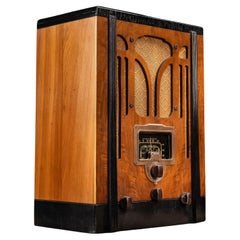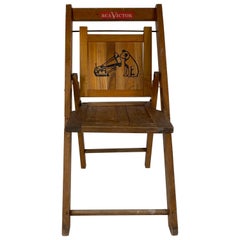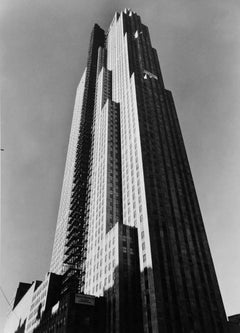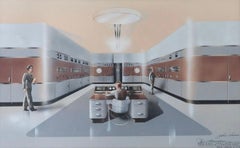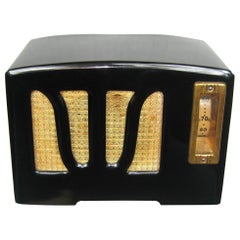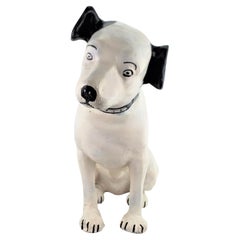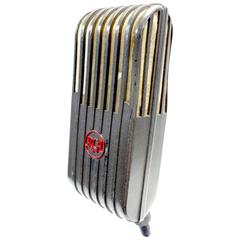Rca Deco
Vintage 1930s American Art Deco Musical Instruments
Wood
Vintage 1930s American Art Deco Children's Furniture
Wood
1930s Art Deco Black and White Photography
Archival Pigment
1930s Art Deco Interior Drawings and Watercolors
Mixed Media, Board
Vintage 1930s American Barware
Glass
Vintage 1930s American Art Deco More Furniture and Collectibles
Bakelite
Early 20th Century American Art Deco Animal Sculptures
Paper
Recent Sales
Mid-20th Century American Art Deco Scientific Instruments
Metal
Early 20th Century American Art Deco Historical Memorabilia
Metal, Chrome
Early 20th Century American Art Deco Historical Memorabilia
Metal, Chrome
Early 20th Century American Art Deco Historical Memorabilia
Metal, Chrome
Vintage 1940s American Art Deco Mounted Objects
Vintage 1940s Art Deco Wall Clocks
Metal
Vintage 1960s American Art Deco Architectural Models
Metal, Copper
Vintage 1930s American Art Deco Architectural Models
Silver Plate, Lead
Mid-20th Century American Art Deco More Furniture and Collectibles
Vintage 1930s Art Deco Musical Instruments
Plastic, Hardwood
Mid-20th Century American Streamlined Moderne Office Chairs and Desk Chairs
Chrome
Vintage 1930s American Art Deco Decorative Objects
Vintage 1940s Chilean Art Deco More Furniture and Collectibles
Bakelite
Vintage 1940s American More Furniture and Collectibles
Early 20th Century British Art Deco Musical Instruments
Metal
Vintage 1920s American Art Deco Musical Instruments
Metal
Vintage 1930s American Art Deco Historical Memorabilia
Aluminum
Early 20th Century American Art Deco Desk Accessories
Metal
Vintage 1930s American Art Deco More Furniture and Collectibles
Chrome, Steel
Early 20th Century American Art Deco Nautical Objects
Paper
Vintage 1930s American Art Deco More Furniture and Collectibles
Bakelite
Early 20th Century American Art Deco Animal Sculptures
Paper
Vintage 1930s American Art Deco Historical Memorabilia
Stainless Steel
Vintage 1930s American Art Deco Decorative Objects
Glass
Vintage 1930s American Art Deco Musical Instruments
Ivory, Leather, Walnut
Vintage 1930s American Art Deco Decorative Objects
20th Century American More Furniture and Collectibles
Vintage 1930s American Art Deco Decorative Objects
Aluminum
Vintage 1930s American Art Deco More Furniture and Collectibles
Chrome
Vintage 1930s American Decorative Objects
Nickel
Vintage 1930s American Decorative Objects
Nickel
Vintage 1930s American Art Deco Architectural Models
Vintage 1930s American Art Deco Signs
Aluminum
Vintage 1930s American Art Deco More Furniture and Collectibles
Aluminum
Vintage 1930s American Art Deco More Lighting
Aluminum
Vintage 1930s American Art Deco Historical Memorabilia
Aluminum
Vintage 1930s American Art Deco Dry Bars
Fabric, Glass, Wood
Vintage 1930s American Art Deco Historical Memorabilia
Aluminum
Vintage 1930s American Art Deco Historical Memorabilia
Fabric, Glass, Bakelite, Wood
Vintage 1940s American Art Deco Wall Lights and Sconces
Vintage 1950s American Art Deco Musical Instruments
Metal
Vintage 1950s American Art Deco Musical Instruments
Metal
Early 20th Century Unknown Art Deco Historical Memorabilia
Stained Glass
People Also Browsed
Early 2000s Italian Modern Sterling Silver
Silver
Vintage 1970s Art Deco Carts and Bar Carts
Late 20th Century Japanese Industrial Nautical Objects
Metal
2010s Italian Mid-Century Modern Chandeliers and Pendants
Brass
21st Century and Contemporary Italian Art Deco Wall Lights and Sconces
Brass
Antique Early 1900s French Mid-Century Modern Cabinets
Glass, Wood
Vintage 1940s American Art Deco Models and Miniatures
Aluminum, Other
2010s American Modern Cabinets
Brass
Vintage 1950s European Mid-Century Modern Console Tables
Metal
Antique 19th Century French Country Chairs
Wood
Vintage 1930s French Art Deco Wardrobes and Armoires
Mirror, Wood
Vintage 1930s Italian Art Deco Lounge Chairs
Fabric, Oak
Mid-20th Century Dutch Mid-Century Modern Musical Instruments
Metal
Vintage 1920s French Art Deco Sideboards
Marble, Chrome
2010s British Modern More Mirrors
Brass
Vintage 1930s American Art Deco Musical Instruments
Wood
Rca Deco For Sale on 1stDibs
How Much is a Rca Deco?
A Close Look at Art-deco Furniture
Art Deco furniture is characterized by its celebration of modern life. More than its emphasis on natural wood grains and focus on traditional craftsmanship, vintage Art Deco dining chairs, tables, desks, cabinets and other furniture — which typically refers to pieces produced during the 1920s and 1930s — is an ode to the glamour of the “Roaring Twenties.”
ORIGINS OF ART DECO FURNITURE DESIGN
- Emerged in the 1920s
- Flourished while the popularity of Art Nouveau declined
- Term derives from 1925’s Exposition Internationale des Arts Décoratifs et Industriels Modernes (International Exhibition of Modern Decorative and Industrial Arts) in Paris, France
- Informed by Ancient Egypt, Cubism, Futurism, Louis XVI, De Stijl, modernism and the Vienna Secession; influenced Streamline Moderne and mid-century modernism
CHARACTERISTICS OF ART DECO FURNITURE DESIGN
- Bold geometric lines and forms, floral motifs
- Use of expensive materials such as shagreen or marble as well as exotic woods such as mahogany, ebony and zebra wood
- Metal accents, shimmering mirrored finishes
- Embellishments made from exotic animal hides, inlays of mother-of-pearl or ivory
ART DECO FURNITURE DESIGNERS TO KNOW
VINTAGE ART DECO FURNITURE ON 1STDIBS
Few design styles are as universally recognized and appreciated as Art Deco. The term alone conjures visions of the Roaring Twenties, Machine Age metropolises, vast ocean liners, sleek typography and Prohibition-era hedonism. The iconic movement made an indelible mark on all fields of design throughout the 1920s and ’30s, celebrating society’s growing industrialization with refined elegance and stunning craftsmanship.
Widely known designers associated with the Art Deco style include Émile-Jacques Ruhlmann, Eileen Gray, Maurice Dufrêne, Paul Follot and Jules Leleu.
The term Art Deco derives from the name of a large decorative arts exhibition held in Paris in 1925. “Art Deco design” is often used broadly, to describe the work of creators in associated or ancillary styles. This is particularly true of American Art Deco, which is also called Streamline Moderne or Machine Age design. (Streamline Moderne, sometimes known as Art Moderne, was a phenomenon largely of the 1930s, post–Art Nouveau.)
Art Deco textile designers employed dazzling floral motifs and vivid colors, and while Art Deco furniture makers respected the dark woods and modern metals with which they worked, they frequently incorporated decorative embellishments such as exotic animal hides as well as veneers in their seating, case pieces, living room sets and bedroom furniture.
From mother-of-pearl inlaid vitrines to chrome aviator chairs, bold and inventive works in the Art Deco style include chaise longues (also known as chaise lounges) and curved armchairs. Today, the style is still favored by interior designers looking to infuse a home with an air of luxury and sophistication.
The vintage Art Deco furniture for sale on 1stDibs includes dressers, coffee tables, decorative objects and more.
